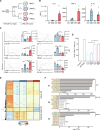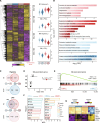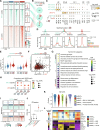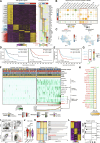NF-κB and TET2 promote macrophage reprogramming in hypoxia that overrides the immunosuppressive effects of the tumor microenvironment
- PMID: 39292770
- PMCID: PMC11409945
- DOI: 10.1126/sciadv.adq5226
NF-κB and TET2 promote macrophage reprogramming in hypoxia that overrides the immunosuppressive effects of the tumor microenvironment
Abstract
Macrophages orchestrate tissue homeostasis and immunity. In the tumor microenvironment (TME), macrophage presence is largely associated with poor prognosis because of their reprogramming into immunosuppressive cells. We investigated the effects of hypoxia, a TME-associated feature, on the functional, epigenetic, and transcriptional reprogramming of macrophages and found that hypoxia boosts their immunogenicity. Hypoxic inflammatory macrophages are characterized by a cluster of proinflammatory genes undergoing ten-eleven translocation-mediated DNA demethylation and overexpression. These genes are regulated by NF-κB, while HIF1α dominates the transcriptional reprogramming, demonstrated through ChIP-seq and pharmacological inhibition. In bladder and ovarian carcinomas, hypoxic inflammatory macrophages are enriched in immune-infiltrated tumors, correlating with better patient prognoses. Coculture assays and cell-cell communication analyses support that hypoxic-activated macrophages enhance T cell-mediated responses. The NF-κB-associated hypomethylation signature is displayed by a subset of hypoxic inflammatory macrophages, isolated from ovarian tumors. Our results challenge paradigms regarding the effects of hypoxia on macrophages and highlight actionable target cells to modulate anticancer immune responses.
Figures





References
MeSH terms
Substances
LinkOut - more resources
Full Text Sources
Molecular Biology Databases

